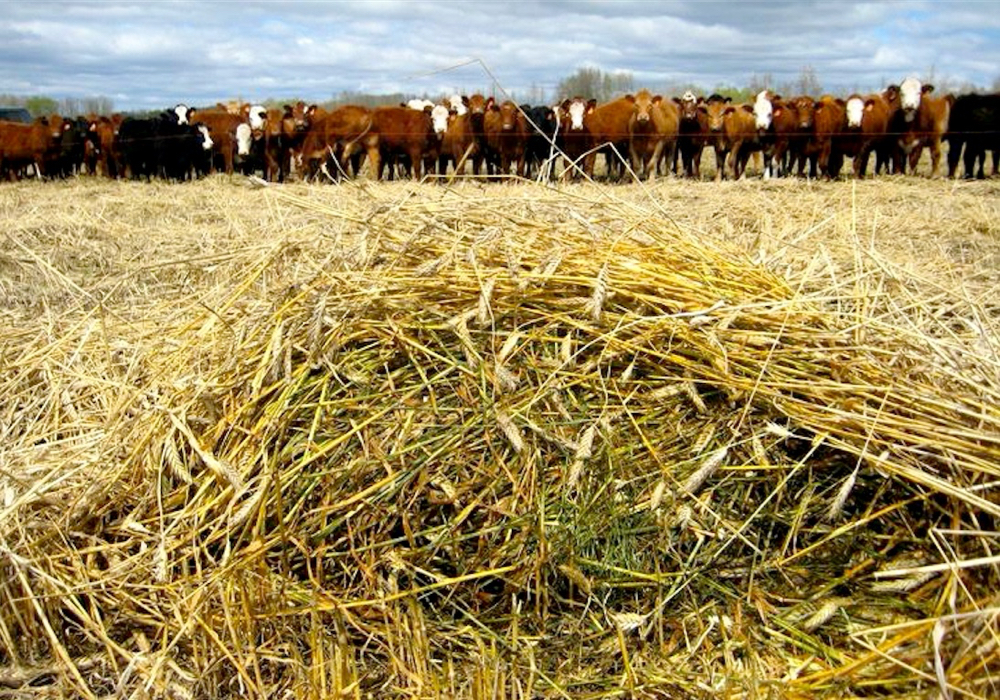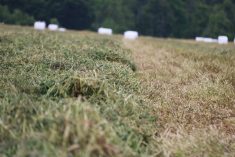Annual forages offer a couple of advantages for producers, says a provincial forage and beef specialist.
“By seeding annual pastures, producers can give stressed perennial pastures a rest,” said Karin Lindquist. “If those pastures are rested early in the spring and following rain, they can produce good amounts of growth later in the summer. However, if used early in the spring, those stressed pastures will be a huge disappointment this grazing year.”
Annual forages can also be used for high-quality silage or greenfeed to add to next winter’s feed supply.
Read Also

An unbelievable tale of a lost engagement ring
After nearly 50 years, a southern Alberta farmer finds her wedding ring in an unusual place.
Seeding annuals needs to be done as early as possible as they need about six weeks to grow before being ready to graze, she said.
“We advise producers to hold off grazing annual cereals until the seed rows have filled in to ensure the plants are well established. Barley or oats will give the fastest growth and the earliest grazing readiness. Winter cereals are slower to establish for grazing, but they have the benefit of growing more uniformly all summer and fall.”
Winter cereals may even be used next spring in some areas, depending on grazing management and overwintering conditions.
“You can add to this mix or replace the winter cereal with some of the other annuals offered — forage rape, annual legumes, warm-season grasses, turnips and radishes — for later or even fall-winter season use for silage or grazing in dry conditions,” said Lindquist.
“Seeding a mixture of spring and winter cereals may work the best as they are often easy to find. A properly balanced seeding mixture of spring and winter cereals for grazing can increase dry matter yield. It’s the same case with other annuals in place of winter cereals.”
Most forage seed companies now carry these diverse annuals but booking early is the key, she added.
“Talk to them and ask for information so you can make the correct mix decisions for your purposes.”
If a producer is seeding a spring-winter cereal mixture for grazing, she recommends that the seeding rate is about 150 per cent of a normal stand.
“In a 1:1 spring-winter cereal mix, seed three-quarters normal seeding rate of the spring cereal and three-quarters normal seeding rate of the winter cereal,” she said. “Alter the mix accordingly to promote earlier or later forage growth. The same principle would follow with the diverse annuals or cocktail mixes.”
Keep the brassicas low enough so that nitrate issues or too-high sulphur levels are not an issue. Italian ryegrass needs more moisture than winter cereals, so it will not work as well in drier areas.
Consider soil test results, moisture potential and projected yields when planning fertilizer application. Fertilizing after each grazing will increase yield. Grazing rotationally allows rest and recovery time for the plants, which will lead to higher yields in annual pastures.
It’s important to supplement with a high calcium mineral that contains magnesium when grazing cereals, especially as the pasture matures, she said.
“Magnesium is not highly palatable, so its consumption needs to be carefully monitored. We suggest starting the animals on the mineral at least one week before going out to graze. That way, the animals have adequate levels of magnesium in their system to prevent tetany, which can be triggered by the lush vegetative growth.”
Calcium deficiency can also be an issue.
“The brassicas and annual legumes address the need for a high-quality forage that has higher calcium levels,” said Lindquist. “Cereal feedstuffs tend to be higher in phosphorus, so the calcium-phosphorus ratio is thrown out of balance. Calcium and magnesium supplementation is crucial.”















